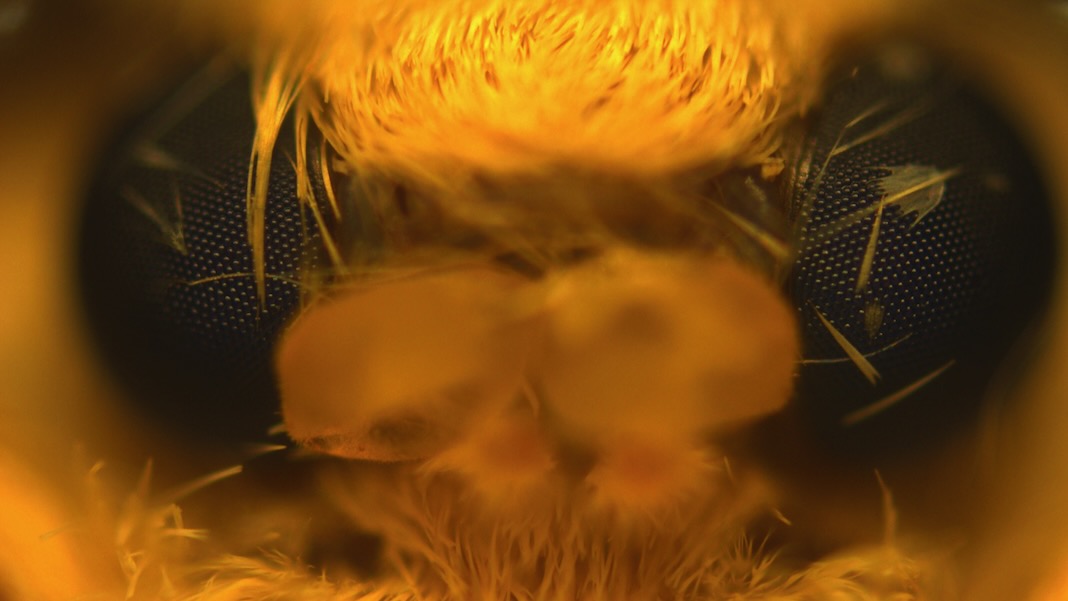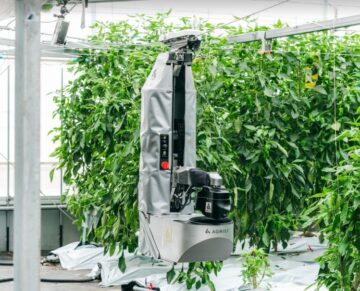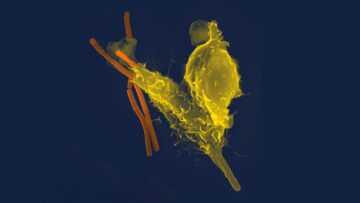
The other day I dove headfirst into a spiderweb while half-asleep inside my camper van.
Screams aside, the logical part of me marveled at how fast a single creepy-crawly had woven such an intricate—and surprisingly bouncy and resilient—web in just a few hours.
Spider silk is a natural wonder. It’s tough and resists damage but is also highly flexible. Light, strong, and biodegradable, the silk can be used for anything from surgical sutures to bulletproof vests.
Why wouldn’t we produce more of these silks for human consumption? Spiders are terrible biological manufacturing machines. Creepy factor aside, they’re very combative—put a few hundred together, and you’ll soon be left with a handful of victors and very little product.
Thanks to genetic engineering, however, we may now have a way to skip spiders altogether in the manufacturing of spider silk.
In a study published last week, a team from Donghua University in China used CRISPR to create genetically engineered silkworms that can produce spider silk. The resulting strands are tougher than Kevlar—a synthetic component used in bulletproof vests. Compared to synthetic materials, such spider silk is a far more biodegradable alternative that may be easily scaled for production.
Dr. Justin Jones at Utah State University, who was not involved in the study, gave the new weave a nod of approval. The resulting material is “a really high-performance fiber,” he said to Science.
Meanwhile, to the authors, their strategy isn’t limited to spider silk. The study uncovered several biophysical principles for building silk materials with exceptional strength and flexibility.
Further experimentation could potentially yield next-generation textiles beyond current capabilities.
Of Worms, Arthropods, and History
Nature offers a wealth of inspiration for cutting-edge materials.
Take Velcro, the hook-and-loop material that may be hanging your bathroom towels or securing your kid’s shoes. The ubiquitous material was first conceived by Swiss engineer George de Mestral in the 1940s when trying to brush burrs off his pants after a hike. A further look under the microscope showed the burrs had sharp hooks which snagged loops in the fabric. De Mestral turned the hiking nuisance into the hook-and-loop fabric available in all hardware stores today.
A less prickly example is silk. First cultured by ancient China roughly 5,000 years ago, silk is spun from wriggly, rotund silkworms and spun into fabrics using primitive looms. These delicate silks spread throughout East Asia and to the west, helping establish the legendary Silk Road.
Yet as anyone who’s owned a silk garment or sheets will know, these are incredibly delicate materials that easily rip and break down.
The challenges we face with silkworm silk are shared by most materials.
One problem is strength: how much stretching a material can handle over time. Imagine yanking a slightly shrunken sweater after washing. The less strength the fibers have, the less likely the garment will hold its shape. The other problem is toughness. Simply put, it’s how much energy a material can absorb before breaking down. An old sweater will easily spring holes with just a tug. On the other hand, Kevlar, a bulletproof material, can literally take bullets.
Unfortunately, the two properties are mutually exclusive in today’s engineered materials, said the team.
Nature, however, has a solution: spider silk is both strong and tough. The problem is wrangling the arthropods to produce silk in a safe and effective environment. These animals are vicious predators. A hundred silkworms in captivity can cuddle in peace; throw a hundred spiders together and you get a bloodbath out of which only one or two remains alive.
A Spider-Worm Womb
What if we could combine the best of silkworms and spiders?
Scientists have long wanted to engineer a “meet-cute” date for the two species with the help of genetic engineering. No, it’s not a cross-species rom-com. The main idea is to genetically endow silkworms with the ability to produce spider silk.
But the genes encoding spider silk proteins are large. This makes them tough to jam into the genetic code of other creatures without overwhelming natural cells and causing them to fail.
Here, the team first used a computational method to hunt down the minimal structure of silk. The resulting model mapped silk protein differences between silkworms and spiders. Luckily, both species spin fibers out of similar protein structures—called polyamide fibers—though each is based on different protein components.
Another bit of luck is shared anatomy. “The silk glands of domestic silkworms and spider silk glands exhibit remarkably similar” physical and chemical environments, said the team.
Using the model, they identified a critical component that boosts silk strength and toughness—a relatively small silk protein, MiSp, found in Araneus ventricosus spiders from East Asia.
With CRISPR-Cas9, a gene editing tool, the team then added genes coding for MiSp into silkworms—essentially rejiggering them to spin spider silk. Accomplishing this was a technological nightmare, requiring hundreds of thousands of microinjections into fertilized silkworm eggs to edit their silk-spinning glands. As a sanity check, the team also added a gene that made the silkworms’ eyes glow hauntingly red, which signaled success.
Study author Junpeng Mi “danced and practically ran to” the lead author, Dr. Meng Qing’s office. “I remember that night vividly, as the excitement kept me awake,” said Mi.
The resulting worm-spider silks are roughly six times tougher than Kevlar but still flexible. It’s surprising, said Jones, because fibers using MiSp aren’t always stretchy. As a bonus, the silkworms also naturally sprayed a sort of protective coating to strengthen the fibers. This made them potentially more durable than previous artificially made spider silk.
The team is further exploring their computational model to design biologically compatible silk for medical sutures. Beyond that they hope to get more creative. Synthetic biologists have long wanted to develop artificial amino acids (the molecular pieces that make up proteins). What would happen if we added synthetic amino acids to biodegradable fabrics?
“The introduction of over one hundred engineered amino acids holds boundless potential for engineered spider silk fibers,” said Mi.
Image Credit: Junpeng Mi, College of Biological Science and Medical Engineering, Donghua University, Shanghai, China
- SEO Powered Content & PR Distribution. Get Amplified Today.
- PlatoData.Network Vertical Generative Ai. Empower Yourself. Access Here.
- PlatoAiStream. Web3 Intelligence. Knowledge Amplified. Access Here.
- PlatoESG. Carbon, CleanTech, Energy, Environment, Solar, Waste Management. Access Here.
- PlatoHealth. Biotech and Clinical Trials Intelligence. Access Here.
- Source: https://singularityhub.com/2023/09/26/transgenic-silkworms-spin-spider-silk-6x-tougher-than-kevlar/
- :has
- :is
- :not
- $UP
- 000
- 23
- a
- ability
- accomplishing
- added
- After
- alive
- All
- also
- alternative
- altogether
- always
- an
- anatomy
- Ancient
- and
- animals
- anyone
- anything
- approval
- ARE
- artificial
- AS
- asia
- aside
- At
- author
- authors
- available
- based
- BE
- because
- before
- BEST
- between
- Beyond
- Bit
- Bonus
- boosts
- both
- Boundless
- Break
- Breaking
- Building
- bulletproof
- but
- by
- CAN
- capabilities
- causing
- cell
- Cells
- challenges
- check
- chemical
- China
- code
- Coding
- College
- combine
- compared
- compatible
- component
- components
- conceived
- consumption
- could
- create
- Creative
- creatures
- credit
- CRISPR
- critical
- Current
- cutting-edge
- damage
- Date
- day
- de
- Design
- develop
- differences
- different
- Domestic
- dove
- down
- dr
- each
- easily
- East
- Effective
- Eggs
- energy
- engineer
- Engineering
- Environment
- environments
- establish
- example
- exceptional
- Excitement
- Exclusive
- exhibit
- Exploring
- Eyes
- fabric
- fabrics
- Face
- factor
- FAIL
- far
- FAST
- few
- fibers
- First
- Flexibility
- flexible
- For
- found
- from
- further
- gave
- gene editing
- genetic engineering
- George
- get
- had
- hand
- handful
- handle
- happen
- Hardware
- Have
- he
- help
- helping
- high-performance
- highly
- Hike
- hiking
- his
- hold
- holds
- Holes
- Hooks
- hope
- HOURS
- How
- However
- HTTPS
- human
- hundred
- hunt
- i
- idea
- identified
- if
- imagine
- in
- incredibly
- inside
- Inspiration
- into
- Introduction
- involved
- ITS
- jones
- just
- Justin
- kept
- Know
- large
- Last
- lead
- left
- legendary
- less
- light
- likely
- Limited
- little
- logical
- Long
- Look
- luck
- Machines
- made
- Main
- make
- MAKES
- manufacturing
- material
- materials
- May..
- me
- medical
- method
- Microscope
- minimal
- model
- molecular
- more
- most
- much
- mutually
- my
- Natural
- naturally
- New
- next-generation
- night
- no
- now
- of
- off
- Offers
- Office
- Old
- on
- ONE
- only
- or
- Other
- out
- over
- overwhelming
- owned
- part
- peace
- physical
- pieces
- plato
- Plato Data Intelligence
- PlatoData
- potential
- potentially
- practically
- predators
- previous
- primitive
- principles
- Problem
- produce
- Product
- Production
- properties
- Protective
- Protein
- Proteins
- published
- put
- really
- Red
- relatively
- remains
- remember
- resulting
- road
- roughly
- safe
- Said
- Science
- securing
- several
- shanghai
- Shape
- shared
- sharp
- showed
- silk
- Silk Road
- similar
- simply
- single
- SIX
- small
- solution
- Soon
- Spider Silk
- Spin
- spread
- spring
- spun
- State
- Still
- stores
- Strands
- Strategy
- strength
- Strengthen
- strong
- structure
- Study
- success
- such
- surgical
- surprising
- Swiss
- synthetic
- Take
- team
- technological
- terrible
- textiles
- than
- that
- The
- The West
- their
- Them
- then
- These
- they
- this
- throughout
- time
- times
- to
- today
- today’s
- together
- tool
- tough
- trying
- Turned
- two
- ubiquitous
- uncovered
- under
- university
- used
- using
- utah
- very
- wanted
- was
- washing
- Way..
- we
- Wealth
- Weave
- week
- West
- What
- when
- which
- while
- WHO
- Wikipedia
- will
- with
- without
- worms
- would
- woven
- years
- Yield
- you
- Your
- zephyrnet










